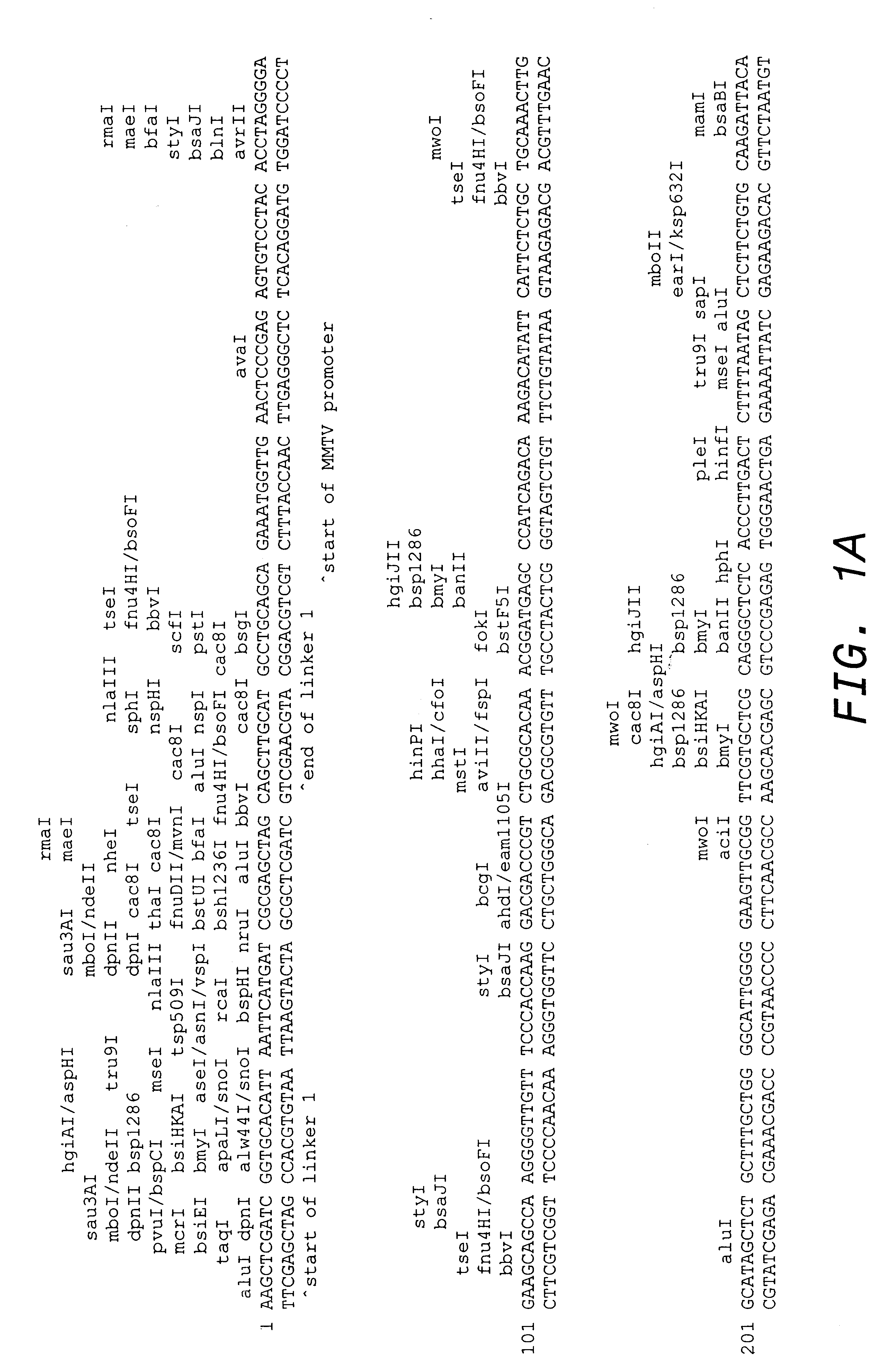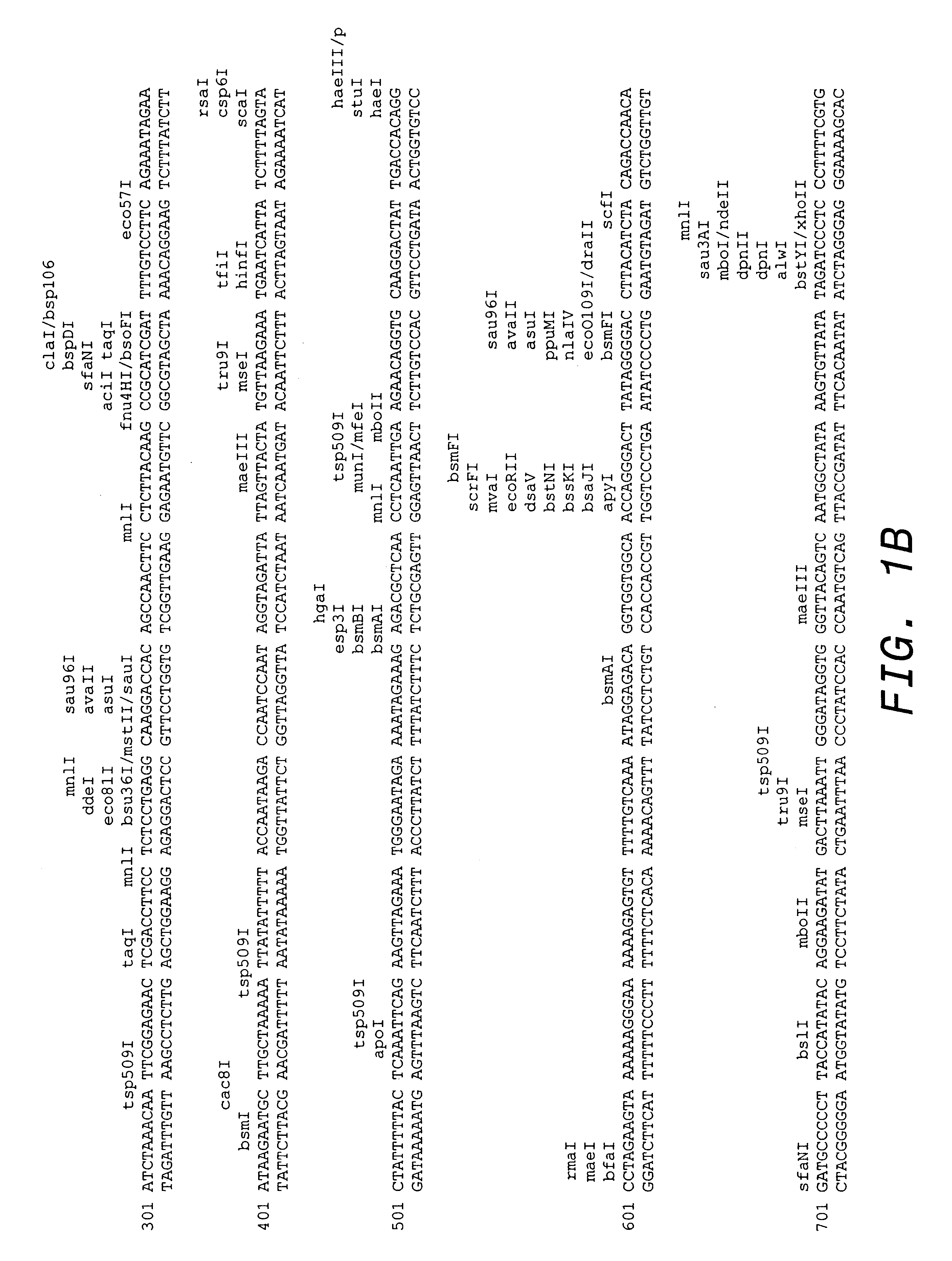Rodent HER2 tumor model
a tumor model and rodent technology, applied in the field of new tumor models, can solve the problems of overexpression of erbb receptors and excessive activation
- Summary
- Abstract
- Description
- Claims
- Application Information
AI Technical Summary
Problems solved by technology
Method used
Image
Examples
example 2
Transgenic Animals
In order to improve on the clinical activity of HERCEPTIN.RTM., a transgenic HER2 mouse model was developed in which novel HER2-directed therapies could be tested preclinically. Tumors arise readily in transgenic mice that express a mutationally activated form of neu, the rat homolog of HER2, but the HER2 that is overexpressed in breast cancers is not mutated and tumor formation is much less robust in transgenic mice that overexpress nonmutated HER2 (Webster et al., Semin. Cancer Biol. 5: 69-76 [1994]). To improve tumor formation with nonmutated HER2, a strategy was used to further enhance overexpression of nonmutated HER2 in a transgenic mouse.
Any promoter that promotes expression of HER2 in epithelial cells in the mouse mammary gland can be used in the disclosed constructs. Many of the milk protein genes are transcribed by promoter / enhancer elements that are specifically active in mammary glands. Milk protein genes include those genes encoding caseins (.alpha.-S....
example 3
HER2 Transgenic Mouse as a Tumor Model to Evaluate HER2-directed Therapies
Mammary gland biopsies of one founder transgenic mouse made as described in Example 2, showed 3+ expression of HER2, as determined by immunohistochemical staining, at about 2 months of age. The amount of HER2 extracellular domain (ECD) shed into serum was measured and found to be about 1.2 ng / ml (Huang et al., supra). This mouse subsequently developed a mammary tumor at 5 months of age, after bearing 4 litters. The tumor was surgically resected under aseptic conditions and minced into small pieces, 2 mm.sup.3, which were then transplanted into the mammary fat pad of wild-type FVB female mice. As can be seen in FIG. 2A, the amount of HER2 ECD shed into serum increased over time following transplant and was found to be directly proportional to the weight of the tumor that developed (FIG. 2B). Tumors developed in 22 of 31 recipient mice, with a latency of 5 weeks. With subsequent passage, tumors developed with sh...
example 4
Identification and Characterization of Cell Lines
A number of cell lines were prepared from tumors that arose spontaneously in several transgenic mice expressing human HER2. Cells were cultured from individual tumors that were identified in Founders 5, 32, 3080 and 3081-3, respectively. Briefly, tumors were excised and finely minced. The minced tumor was treated with collaginase and dispase for 30 minutes at 37.degree. C. and then triturated with a 1 ml pipette tip. After allowing chunks to settle, the fine suspension was collected, diluted in growth media and spun. The growth media comprised DMEM and F12 (1:1), insulin, transferrin, vitamin E, progesterone, ethanolamine, hydrocortisone, T3, estradiol, heregulin, EGF and 2% FCS. After spinning the cells were resuspended in growth media and layered onto a 2-phase percoll gradient. The gradient was spun for 30 minutes at 2700 rpm at 4.degree. C.
Cells were collected from the bottom interface, washed in media, resuspended in growth media...
PUM
| Property | Measurement | Unit |
|---|---|---|
| median time | aaaaa | aaaaa |
| molecular weight | aaaaa | aaaaa |
| volume | aaaaa | aaaaa |
Abstract
Description
Claims
Application Information
 Login to View More
Login to View More - R&D
- Intellectual Property
- Life Sciences
- Materials
- Tech Scout
- Unparalleled Data Quality
- Higher Quality Content
- 60% Fewer Hallucinations
Browse by: Latest US Patents, China's latest patents, Technical Efficacy Thesaurus, Application Domain, Technology Topic, Popular Technical Reports.
© 2025 PatSnap. All rights reserved.Legal|Privacy policy|Modern Slavery Act Transparency Statement|Sitemap|About US| Contact US: help@patsnap.com



